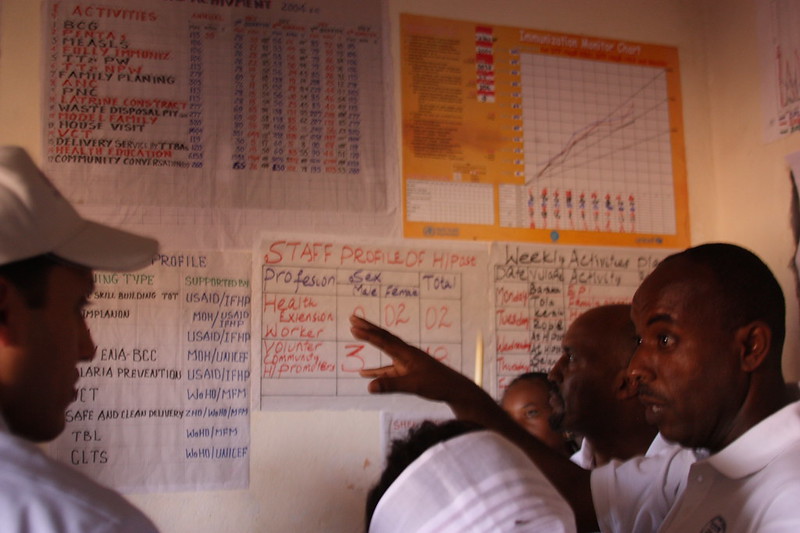The ideas that will lead to sustained, transformative change in Africa must and will come from Africans in Africa. Central to this is the building of Africa-led, Africa-based institutions capable of producing research that responds to local needs. Yet, despite decades of global investment targeted at building capacity in African institutions, sub-Saharan Africa (SSA) continues to lag behind all other global regions on key research metrics, including overall institutional rating, research outputs, and trained personnel.
In a new policy paper, we summarize the primary obstacles to institutional growth in SSA and provide recommendations for innovative models to more successfully and impactfully address capacity building in the region (read on for the key takeaways). Now, we need your help to ensure that the next phase of the work can be effective, sustainable, and accountable to delivering results. We welcome feedback on this work through either the comments below or sent directly to Alex Ezeh at [email protected].
The current institutional financing model is the big obstacle to growth
Over the past four plus decades, numerous efforts have targeted capacity building in SSA (see ACBF, TTI, PHEA, and AII as examples), and while some of these efforts have been met with success, more must be done to address the biggest challenge to institutional development in SSA: the current financing model of organizations in the region. This model, which provides small-scale, short-term, and externally funded and led project grants leads to limited budgets within African institutions, with damaging spillover effects leading to:
-
inability to strengthen internal systems, such as governance and management structures and financial systems and processes. Institutions may be unable to fill these crucial capacity gaps without more financing, but they are also unable to attract more financing without higher capacity.
-
inability to develop niche areas and hence, reputations, since they are constantly chasing more funds. As a result, African institutions are not able to focus on achieving their mission and feel unable to develop and lead their own research ideas.
-
inability to compete with global and private sector organizations in terms of attracting grants, attracting and retaining top talents, responding to evidence needs of their governments and other local stakeholders, and promoting effective use of research products.
How can we overcome this obstacle?
For capacity building efforts to be impactful, sustainable, and effective, such efforts should:
-
promote local ownership of local ideas through encouraging, catalyzing, and facilitating domestic investments in research and development. Funding structures should allow African organizations to respond to locally rather than globally defined needs and priorities. African organizations should additionally be supported to achieve local visibility and credibility.
-
promote collaboration within and among African researchers and institutions. Efforts should facilitate the sharing of experiences and knowledge between institutions and encourage research organizations to collaborate with other types of organizations to improve use and relevancy of research products.
-
respond to specific challenges that may be unique to SSA, especially the common challenge of the current inefficient funding system.
Taking these three considerations into account, our paper presents three possible models to innovate the research financing landscape in SSA: the multi-stakeholder platform, the integrator organization, and the scale model. You can read more about each of them in the paper.
Send us your feedback
Based on initial feedback from key stakeholders including African institutional leaders, development partners with significant interest in SSA, and external experts, the multi-stakeholder platform has emerged as the model with the highest chance of success. This model posits the creation of a fund that: combines government finances with donor finances to create local buy-in; amplifies the amount of funds available to institutions; and focuses exclusively on financing African institutions. We are now gearing up for the next phase of this work, which will convene an all-African thinking team to further refine the model and build stakeholder buy-in over the next year and a half. These experts have extensive experience in the field, but we believe in the power of the collective to advance ideas.
In this spirit, we would like to invite you—policymakers, development partners, independent experts, and members of the community—to share any and all feedback on this work either as a comment on this blog post or as a direct email to the principal investigator, Alex Ezeh, at [email protected].
What are your thoughts on the need for better organizational capacity in SSA? Do you have experience working with capacity building efforts in SSA, and if so, what are lessons you learned through that experience? Do you know of additional obstacles that must be addressed? What is your feedback on the multi-stakeholder platform? Answers to these, and all other questions, are most welcome.
Read the full paper here.
Disclaimer
CGD blog posts reflect the views of the authors, drawing on prior research and experience in their areas of expertise. CGD is a nonpartisan, independent organization and does not take institutional positions.





